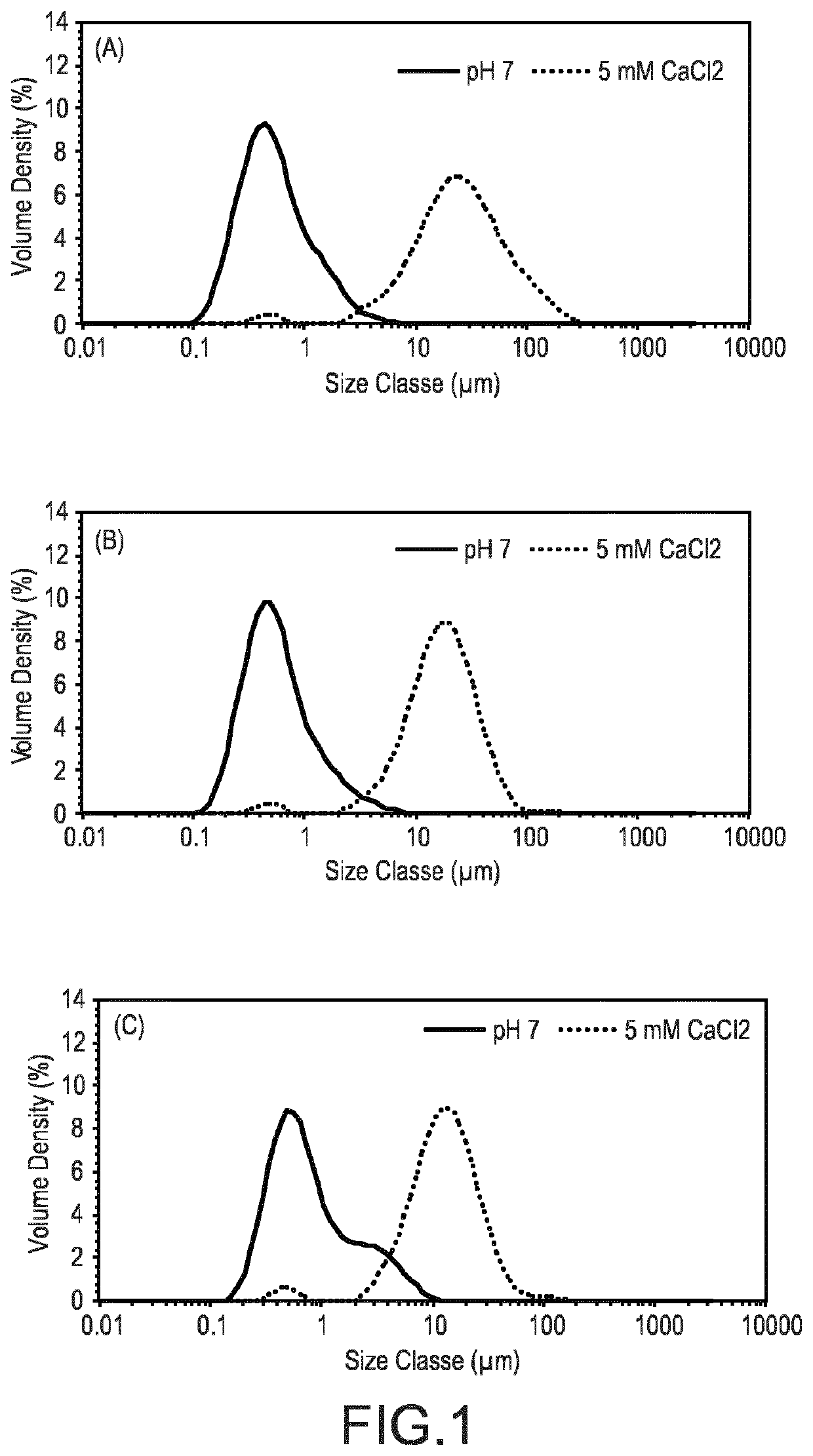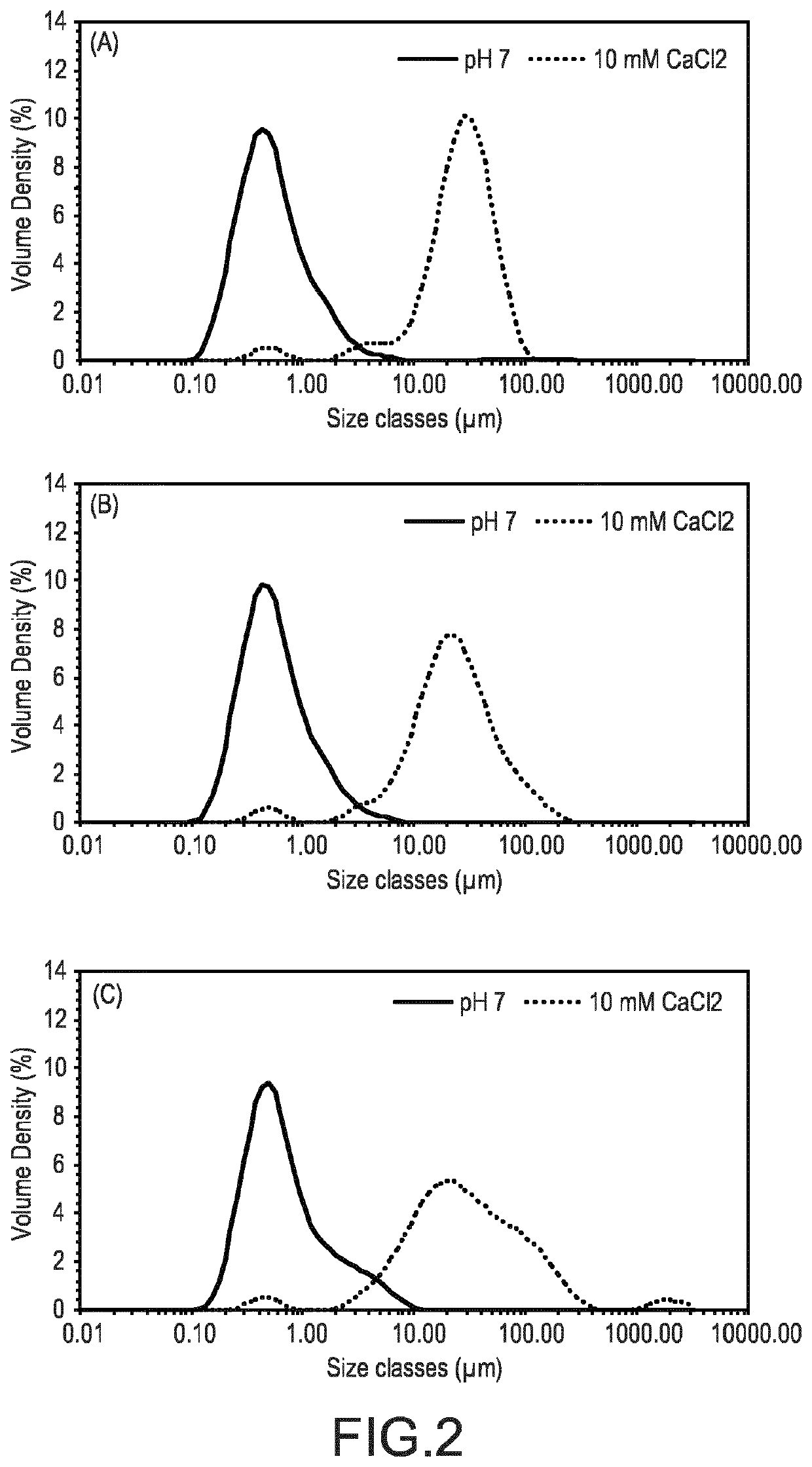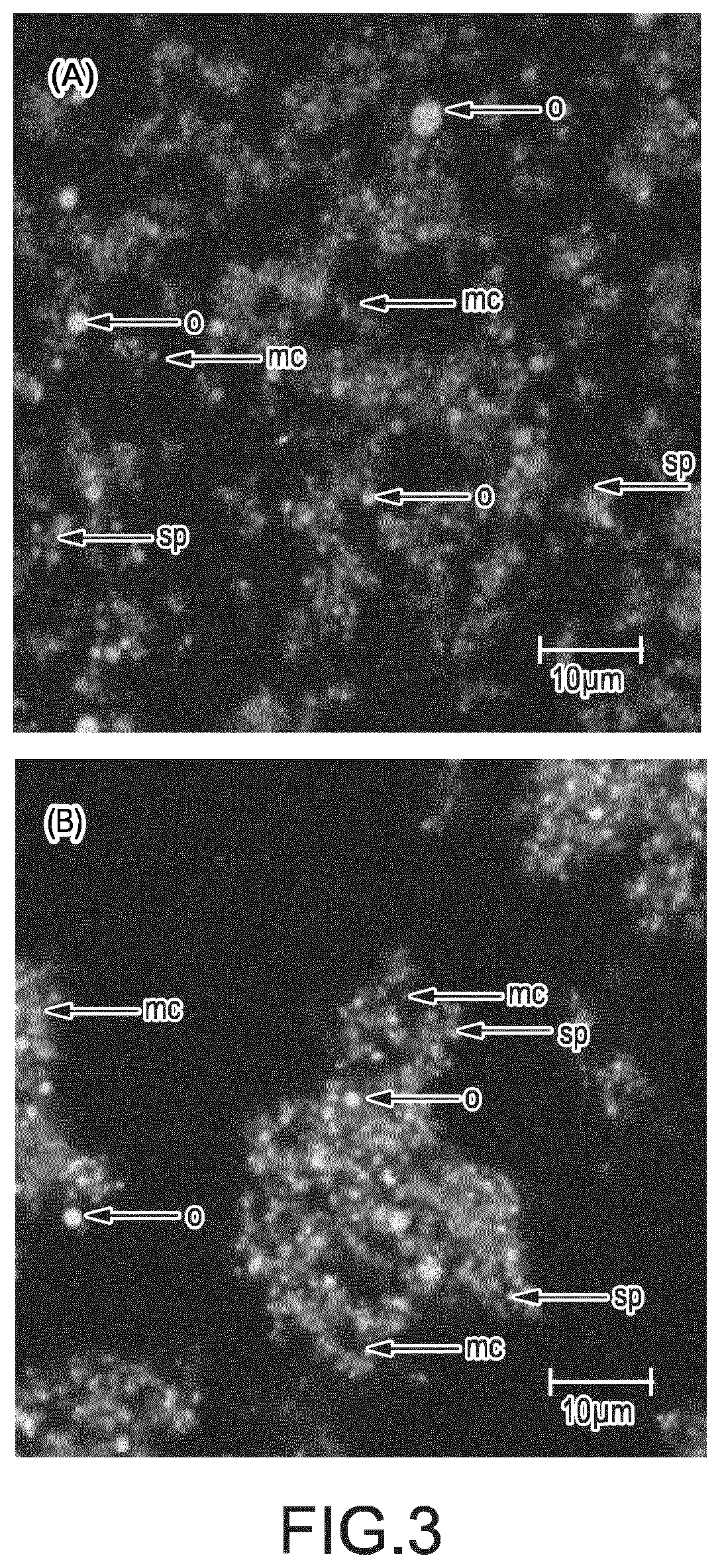A method of producing a food or beverage product with free divalent cations dairy and plant protein aggregation
a technology of divalent cations and applied in the field of producing food or beverage products, can solve the problems of not being desirable as chemically modified and expensive ingredients, superphosporylated caseins are not desirable as a chemically modified and expensive ingredient, and gel formation is not desirable in many semi-solid food and beverage products, so as to achieve the effect of improving texture and mouthfeel
- Summary
- Abstract
- Description
- Claims
- Application Information
AI Technical Summary
Benefits of technology
Problems solved by technology
Method used
Image
Examples
example 1
Milk Protein and Pea Protein Aggregates Obtained by Calcium Lactate Addition in Recombined Full Fat Milk and Pea Protein Isolates, where 75% of the Total Protein Content is Milk Protein and 25% is Pea Protein
Material and Methods
[0073]Skim milk powder (MSK) low heat was provided by Hochdorf (Switzerland) and pea protein isolate Nutralys XF was provided by Roquette (France).
[0074]Since the protein concentration of the pea protein isolate is higher than skimmed milk powder, total solids (TS) were adjusted by addition of maltodextrin DE 38-41 (Roquette, France), in order to achieve 13% TS, as an average full fat milk. Sunflower high oleic oil (Oleificio Sabo, Switzerland) has been used to replace milk fat.
[0075]At a 13% TS the system has been formulated with 3.3% total protein (2.5% milk protein, 0.8% pea protein) and 3.5% oil.
[0076]Table 1 shows the composition of the milk-pea system.
TABLE 1Main ingredients and exemplary recipe of amixed 75:25 MSK-pea protein system 13% TS.IngredientTS...
example 2
Milk Protein and Pea Protein Aggregates Obtained by Calcium Lactate Addition in Double Concentrated Recombined Full Fat Milk, where 25% of the Milk Protein have been Substituted by Pea Proteins
[0092]Skim milk powder (MSK) low heat was provided by Hochdorf (Switzerland) and pea protein isolate Nutralys XF was provided by Roquette (France).
[0093]Since the protein concentration of the pea protein isolate is higher than skimmed milk powder, total solids (TS) were adjusted by addition of maltodextrin DE 38-41 (Roquette, France), in order to achieve 13% TS, as an average full fat milk. Sunflower high oleic oil (Oleificio Sabo, Switzerland) has been used to replace milk fat.
[0094]At a 26% TS the system has been formulated with 6.6% total protein (4.95% milk protein, 1.65% pea protein) and 7% oil.
[0095]Table 1 shows the composition of the milk-pea system.
TABLE 3Main ingredients and exemplary recipe of amixed 75:25 MSK-pea protein system 26% TS.IngredientTS (%)Protein (%)Quantity (%)26% TSMS...
example 3
Milk Protein and Pea Protein Aggregates Obtained by Calcium Lactate Addition in Double Concentrated Recombined Reduced Fat Milk, where 25% of the Milk Protein have been Substituted by Pea Proteins
[0104]Skim milk powder (MSK) low heat was provided by Hochdorf (Switzerland) and pea protein isolate Nutralys XF was provided by Roquette (France).
[0105]Since the protein concentration of the pea protein isolate is higher than skimmed milk powder, total solids (TS) were adjusted by addition of maltodextrin DE 38-41 (Roquette, France), in order to achieve 13% TS, as an average full fat milk. Sunflower high oleic oil (Oleificio Sabo, Switzerland) has been used to replace milk fat. At a 26% TS the system has been formulated with 6.6% total protein (4.95% milk protein, 1.65% pea protein) and 1% oil.
[0106]Table 5 shows the composition of the milk-pea system.
TABLE 5Main ingredients and exemplary recipe of amixed 75:25 MSK-pea protein system 26% TS.IngredientTS (%)Protein (%)Quantity (%)26% TSMSK,...
PUM
 Login to View More
Login to View More Abstract
Description
Claims
Application Information
 Login to View More
Login to View More - R&D
- Intellectual Property
- Life Sciences
- Materials
- Tech Scout
- Unparalleled Data Quality
- Higher Quality Content
- 60% Fewer Hallucinations
Browse by: Latest US Patents, China's latest patents, Technical Efficacy Thesaurus, Application Domain, Technology Topic, Popular Technical Reports.
© 2025 PatSnap. All rights reserved.Legal|Privacy policy|Modern Slavery Act Transparency Statement|Sitemap|About US| Contact US: help@patsnap.com



